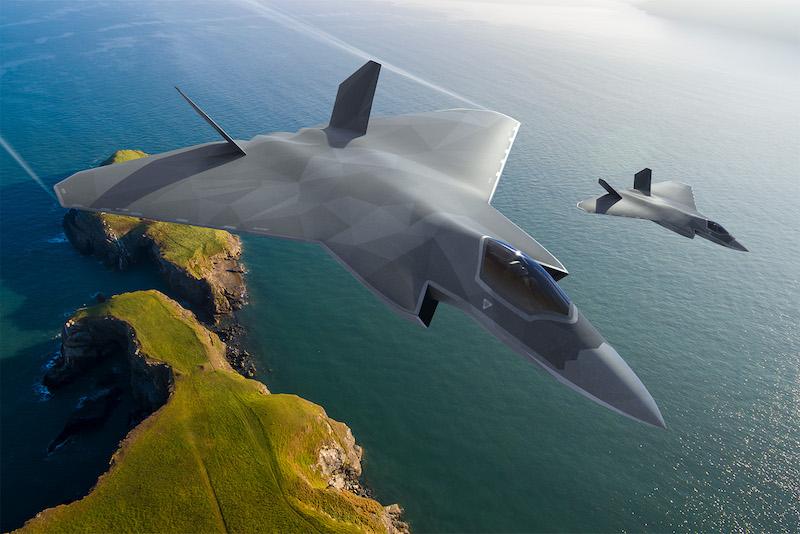
The new configuration of the future combat aircraft appears to feature significantly increased wing area and a more conventional delta wing.
FARNBOROUGH—The industrial partners in the Global Combat Air Program (GCAP) are set to display a new model of the latest proposed configuration of the crewed combat aircraft at the Farnborough Airshow to illustrate the rapid progress being made on the tri-national program.
The new configuration of the future aircraft appears to feature significantly increased wing area and a more conventional delta wing, rather than the lambda wing featured on previous iterations. Partners say these changes improve the combat platform’s aerodynamics.
Officials from industry partners in GCAP—BAE Systems, Leonardo and Mitsubishi Heavy Industries—say that the configuration illustrates the steady progress on the program backed by Italy, Japan and the UK. Engineers from the three companies are working together through a collaboration agreement on the design and development of the future combat aircraft using a range of digital tools and techniques, including computer-based modeling and virtual reality, to evolve the aircraft’s design during the conception phase.
The industrial partners are set to demonstrate their progress on GCAP at Farnborough as the UK government begins work on a strategic defense review that could decide on the country’s continued role in the program. Under current plans, by this time next year, the governments in London, Rome and Tokyo are expected to have delivered a contract for the aircraft’s full development, which is envisioned to replace British and Italian Eurofighters and Japanese Mitsubishi F-2s from around 2035 onward.
In addition, the three countries hope to capture a portion of the export market.
“The new model ... shows notable progress in the design and [conception] of this future fighter jet,” says Herman Claesen, BAE Systems’ managing director of Future Combat Air Systems.
“We’ll continue to test and evolve the design as we move closer toward the next phase of the program,” Claesen adds.
The GCAP fighter, known as Tempest in the UK, is expected to be one-third larger and heavier than the Eurofighter Typhoon it will go on to replace.
Over the past year, industry partners have been collaborating to nail down aspects of work allocation.
Here at Farnborough, the national primes are expected to provide a progress report on their plans to form a joint venture, like Eurofighter GmbH, the company that manages the Eurofighter program on behalf of industry partners. This joint venture will lead the GCAP industrially and receive the development contract from the three governments.
Separately, to manage the program, the three governments have formed the GCAP International Government Organization (GIGO), a UK-based entity with rotational management that operates like the U.S. F-35 program’s Joint Program Office. GIGO’s role will be awarding contracts for the different phases, defining and prioritizing requirements and resolving issues among the partners.
“Since the treaty was signed in December 2023, the program has seen [a] strong commitment from each partner,” says Guglielmo Maviglia, Leonardo’s chief GCAP officer.
“Each brings different but complementary qualities and requirements, and we are now working closely together to exchange knowledge, address common challenges and achieve common goals,” Maviglia says.
BAE Systems is also expected to provide more detail on the ongoing technology maturation work and development of the UK demonstrator aircraft, which was announced at the 2022 show. Having last year updated on the development progress of flight control software, ejection seat testing and aerodynamic engine trials—to produce a serpentine duct that will allow the aircraft’s two Eurojet EJ200 engines to operate across the demonstrator’s flight envelope—BAE Systems may announce further progress on the platform, as well as the planform the aircraft will use. Like the Experimental Aircraft Program demonstrator, which supported development of the Eurofighter in the 1980s, the UK Tempest demonstrator will prove “high-risk elements” of the aircraft, including low-observable materials and technologies envisioned for the airframe.
